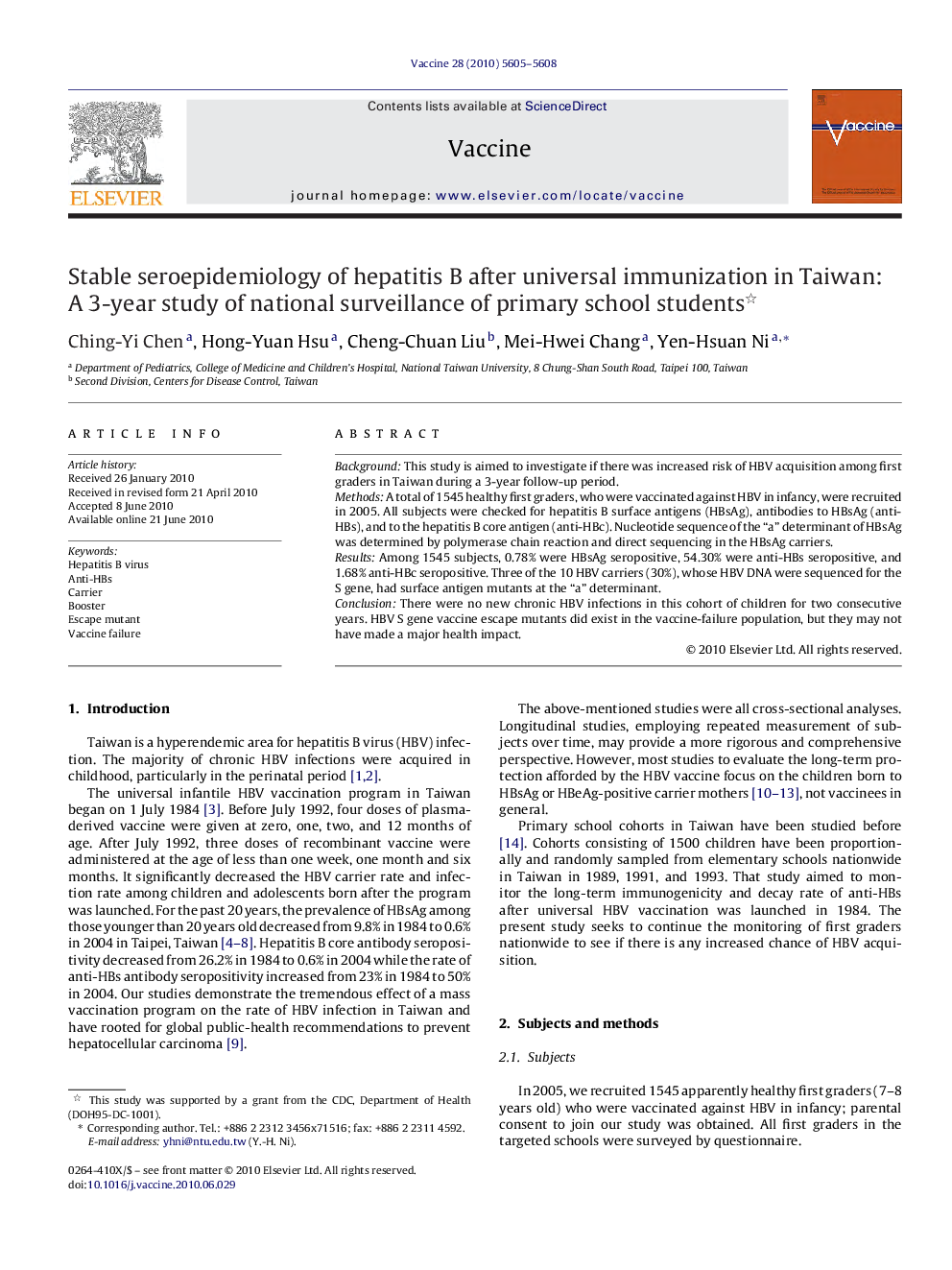| Article ID | Journal | Published Year | Pages | File Type |
|---|---|---|---|---|
| 2404425 | Vaccine | 2010 | 4 Pages |
BackgroundThis study is aimed to investigate if there was increased risk of HBV acquisition among first graders in Taiwan during a 3-year follow-up period.MethodsA total of 1545 healthy first graders, who were vaccinated against HBV in infancy, were recruited in 2005. All subjects were checked for hepatitis B surface antigens (HBsAg), antibodies to HBsAg (anti-HBs), and to the hepatitis B core antigen (anti-HBc). Nucleotide sequence of the “a” determinant of HBsAg was determined by polymerase chain reaction and direct sequencing in the HBsAg carriers.ResultsAmong 1545 subjects, 0.78% were HBsAg seropositive, 54.30% were anti-HBs seropositive, and 1.68% anti-HBc seropositive. Three of the 10 HBV carriers (30%), whose HBV DNA were sequenced for the S gene, had surface antigen mutants at the “a” determinant.ConclusionThere were no new chronic HBV infections in this cohort of children for two consecutive years. HBV S gene vaccine escape mutants did exist in the vaccine-failure population, but they may not have made a major health impact.
